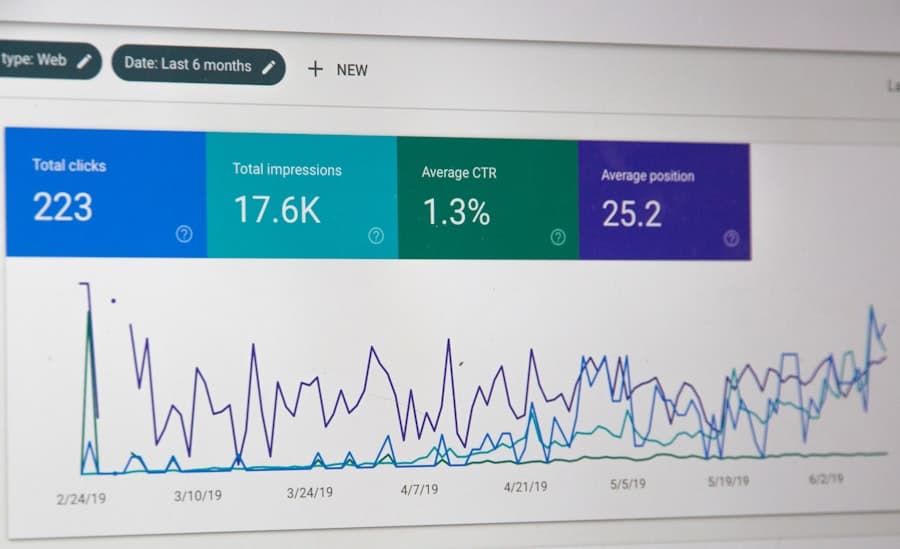Real-time epidemic forecasting has emerged as a critical tool in public health, particularly in the wake of global health crises such as the COVID-19 pandemic. This approach involves the use of advanced computational techniques to predict the spread of infectious diseases, enabling health authorities to implement timely interventions. The ability to forecast epidemics in real-time can significantly enhance preparedness and response strategies, ultimately saving lives and reducing the economic impact of outbreaks.
By integrating various data sources, including health records, environmental factors, and social media trends, real-time forecasting provides a comprehensive view of potential disease trajectories.
From identifying hotspots of infection to optimizing resource allocation, these forecasts inform decision-making processes at local, national, and global levels.
As the world becomes increasingly interconnected, the rapid transmission of diseases poses a formidable challenge. Therefore, developing robust forecasting models that can adapt to changing conditions is paramount for effective epidemic management. The integration of artificial intelligence (AI) and big data analytics into this domain has revolutionized how we approach epidemic forecasting, making it more accurate and responsive.
Key Takeaways
- Real-time epidemic forecasting is crucial for early detection and response to outbreaks, helping to save lives and prevent the spread of diseases.
- AI plays a vital role in real-time epidemic forecasting by analyzing large volumes of data quickly and accurately, enabling faster decision-making and response.
- Big data provides valuable insights for real-time epidemic forecasting, including information on population movements, healthcare utilization, and environmental factors.
- AI models and algorithms, such as machine learning and deep learning, are used to predict disease spread, identify hotspots, and optimize resource allocation in real-time epidemic forecasting.
- Challenges and limitations of AI in real-time epidemic forecasting include data privacy concerns, algorithm biases, and the need for continuous validation and improvement of models.
The Importance of AI in Real-Time Epidemic Forecasting
Artificial intelligence plays a pivotal role in enhancing the accuracy and efficiency of real-time epidemic forecasting. Traditional methods often rely on historical data and simplistic models that may not account for the complexities of disease transmission dynamics. In contrast, AI algorithms can analyze vast amounts of data from diverse sources, identifying patterns and correlations that human analysts might overlook.
Machine learning techniques, for instance, can be trained on historical outbreak data to recognize the factors that contribute to disease spread, allowing for more precise predictions. Moreover, AI’s ability to process real-time data enables health officials to respond swiftly to emerging threats. For example, during the COVID-19 pandemic, AI-driven models were employed to track infection rates and predict future outbreaks based on current trends.
These models utilized data from various sources, including hospital admissions, mobility patterns, and even social media sentiment analysis. By providing timely insights, AI empowers public health officials to implement targeted interventions, such as vaccination campaigns or lockdown measures, thereby mitigating the impact of epidemics.
The Role of Big Data in Real-Time Epidemic Forecasting

Big data serves as the backbone of real-time epidemic forecasting, providing the necessary information for AI algorithms to function effectively.
This wealth of information allows for a more nuanced understanding of disease dynamics and facilitates the development of sophisticated predictive models.
One notable example of big data’s impact on epidemic forecasting is its use in tracking influenza outbreaks. Researchers have leveraged search engine query data to monitor flu-related searches, correlating spikes in online activity with actual infection rates. This innovative approach allows for early detection of flu outbreaks before they are reported through traditional surveillance systems.
Additionally, geographic information systems (GIS) can analyze spatial data to identify regions at higher risk for outbreaks based on environmental factors such as temperature and humidity. By harnessing big data analytics, public health officials can gain insights that were previously unattainable, leading to more effective epidemic response strategies.
AI Models and Algorithms for Real-Time Epidemic Forecasting
Various AI models and algorithms have been developed specifically for real-time epidemic forecasting, each with its strengths and applications. One prominent approach is the use of neural networks, which are designed to mimic the human brain’s interconnected neuron structure. These networks excel at recognizing complex patterns within large datasets, making them particularly useful for predicting disease spread based on multifaceted variables.
Another widely used model is the Susceptible-Infected-Recovered (SIR) model, which has been enhanced through machine learning techniques. By incorporating real-time data into the SIR framework, researchers can adjust parameters dynamically based on current infection rates and recovery statistics. This adaptability allows for more accurate predictions as conditions evolve during an outbreak.
Additionally, ensemble learning methods combine multiple models to improve forecasting accuracy by leveraging the strengths of each individual model while mitigating their weaknesses. Furthermore, reinforcement learning has gained traction in epidemic forecasting by enabling algorithms to learn optimal intervention strategies through trial and error. For instance, an AI system could simulate various public health interventions—such as social distancing measures or vaccination rollouts—and evaluate their effectiveness in controlling an outbreak.
This iterative learning process allows for the continuous refinement of strategies based on real-world outcomes.
Challenges and Limitations of AI in Real-Time Epidemic Forecasting
Despite the advancements in AI-driven epidemic forecasting, several challenges and limitations persist that can hinder their effectiveness. One significant issue is the quality and availability of data. In many regions, especially low-resource settings, data collection may be inconsistent or incomplete.
Inaccurate or outdated information can lead to flawed predictions and misguided public health responses. Moreover, biases present in historical data can perpetuate inequalities in healthcare access and outcomes if not addressed appropriately. Another challenge lies in the complexity of disease transmission dynamics.
Infectious diseases are influenced by a myriad of factors, including human behavior, environmental conditions, and genetic variations among pathogens. Capturing these complexities within a predictive model is inherently difficult. For instance, while AI can analyze patterns in mobility data during an outbreak, it may struggle to account for sudden changes in human behavior due to public health interventions or societal factors such as fear or misinformation.
Additionally, there is a risk of over-reliance on AI models without sufficient human oversight. While algorithms can provide valuable insights, they should not replace critical thinking and expertise from public health professionals. The integration of AI into decision-making processes must be approached with caution to ensure that ethical considerations are prioritized and that human judgment remains central to epidemic response efforts.
Case Studies: Successful Implementation of AI in Real-Time Epidemic Forecasting

Early Warning Systems
One notable example is the use of AI by BlueDot, a Canadian health monitoring company that gained international attention during the early stages of the COVID-19 pandemic. BlueDot’s algorithms analyzed a multitude of data sources, including airline ticketing information and news reports, to identify potential outbreaks before they were officially reported by health authorities. Their early warning system alerted clients about the emerging threat posed by COVID-19 weeks ahead of official announcements.
Predictive Capabilities
Another compelling case is the work conducted by researchers at Harvard University who developed an AI model to predict dengue fever outbreaks in Southeast Asia. By integrating climate data with historical dengue incidence reports, their model was able to forecast outbreaks with remarkable accuracy several months in advance. This predictive capability allowed local health authorities to allocate resources effectively and implement preventive measures before outbreaks escalated.
Enhancing Epidemic Response Efforts
In addition to these examples, the use of AI-driven tools during the Ebola outbreak in West Africa demonstrated how technology could enhance epidemic response efforts. Organizations like IBM collaborated with local governments to develop predictive models that analyzed various factors influencing Ebola transmission. These models helped inform containment strategies and resource allocation during a critical period when timely interventions were essential for controlling the outbreak.
Ethical Considerations in AI-Driven Epidemic Forecasting
The integration of AI into epidemic forecasting raises several ethical considerations that must be addressed to ensure responsible use of technology. One primary concern is privacy; as AI systems often rely on personal health data and location information to make predictions, safeguarding individual privacy becomes paramount. Striking a balance between utilizing data for public health benefits while respecting individuals’ rights is a complex challenge that requires transparent policies and robust data protection measures.
Moreover, there is a risk that AI-driven forecasts could exacerbate existing health disparities if not implemented equitably. For instance, if predictive models are primarily trained on data from affluent regions or populations, they may not accurately reflect the realities faced by marginalized communities. This could lead to misallocation of resources or inadequate responses in areas that are already vulnerable to health crises.
Additionally, accountability is a crucial ethical consideration in AI-driven epidemic forecasting. When decisions are made based on algorithmic predictions, it is essential to establish clear lines of responsibility for outcomes resulting from those decisions. Public health officials must ensure that they are not solely relying on technology but are also engaging with communities and stakeholders to understand local contexts and needs.
Future Directions and Innovations in AI for Real-Time Epidemic Forecasting
Looking ahead, several promising directions for innovation in AI-driven real-time epidemic forecasting are emerging. One area of focus is enhancing model interoperability by developing standardized frameworks that allow different predictive models to share data seamlessly. This would enable researchers and public health officials to combine insights from various sources more effectively and improve overall forecasting accuracy.
Another exciting avenue involves leveraging advancements in natural language processing (NLP) to analyze unstructured data from social media platforms and news articles more comprehensively. By harnessing sentiment analysis and topic modeling techniques, researchers can gain insights into public perceptions regarding health interventions or emerging threats—information that can be invaluable for tailoring communication strategies during outbreaks. Furthermore, integrating genomic surveillance with AI-driven forecasting holds great potential for understanding pathogen evolution and transmission dynamics better.
By analyzing genetic sequences alongside epidemiological data, researchers can identify mutations that may affect transmissibility or vaccine efficacy—critical information for guiding public health responses. As technology continues to evolve, fostering interdisciplinary collaboration between computer scientists, epidemiologists, public health officials, and ethicists will be essential for maximizing the benefits of AI in epidemic forecasting while addressing ethical concerns effectively. The future landscape of real-time epidemic forecasting promises exciting innovations that could transform how we respond to infectious disease threats globally.
In a related article,

